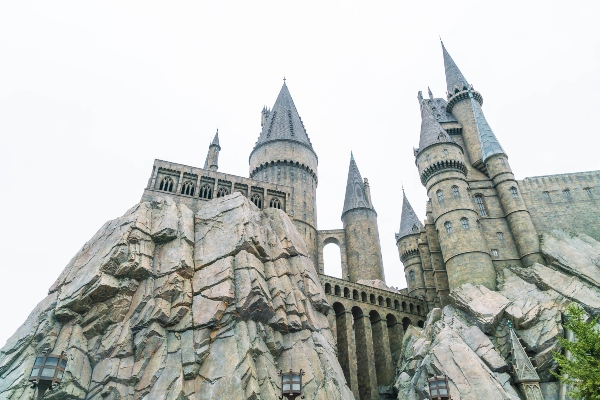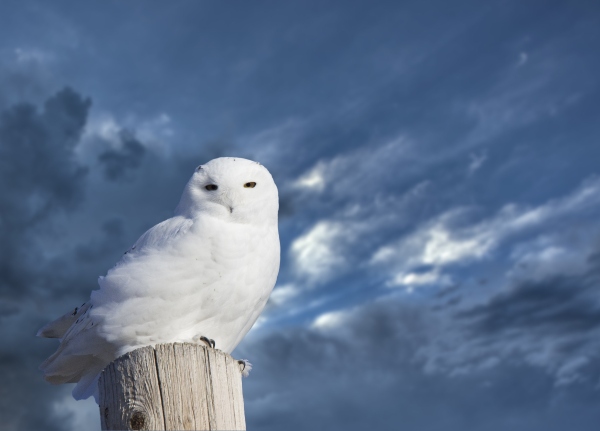Sergio José Rodríguez González - Mié, 06/11/2024 - 12:38

Round glasses popularized by the character Harry Potter in the saga.
J.K. Rowling’s Harry Potter saga is an English story that primary targets young readers rather than adults. In its film adaptation we clearly recognise a typical English setting in London but in fact, the England in which Harry Potter is set is an older England with a lot of remains from the Middle Ages. Harry Potter’s England is a time of fantastic beasts (detailed also in J.K. Rowling’s Fantastic Beasts and Where to Find Them), magical spells in Latin (a common language in the Middle Ages), the castles that remind us the typical castles and cathedrals built in Medieval England (Hogwarts), herbalists and alchemists (potions and the Philosopher’s Stone), manuscripts (The Marauder’s Map), feasts, tournaments (Triwizard Tournament) and battles.
When reading Harry Potter is very easy to discover a lot of references between the medieval tradition and J.K. Rowling’s original Wizarding World. So, we can confirm that Harry Potter is a literary English creation that has a lot of medieval elements in its plot, and in the film adaptations of the Harry Potter books, those medieval remains are also present.
Medieval Knighthood and the Chivalric Code
Medieval knights were supposed to accomplish the moral rules strictly attached to their social status: honour and dignity must be perpetuated over their lives. In the Medieval period, the heritage was a requirement for a boy to become a knight, meaning that a boy could only become a knight due to birthright. In the Harry Potter saga, Lord Voldemort chooses Harry Potter, who is a pure-blood wizard because both parents were magical, so in J.K. Rowling’s Wizarding World you belong to the magical community only by birthright. Moreover, a knight must be brave, generous, fair, merciful, and the most important virtue: a leader in his community. These virtues are all embodied by Harry Potter himself because Harry Potter is a leader because he is “the chosen one” to fight against Lord Voldemort and he must be a leader until the quest of killing Lord Voldemort is finished. Harry Potter also demonstrates to be merciful and generous by not killing Bellatrix Lestrange and others when he can do that.
Arthuriana
Arthurian literature is present not only in magical objects and characters that appear in the Harry Potter saga but also in the internal structure and plot organisation of the books themselves. The hero’s quest and the pursuing quest are references to the Arthurian literature and legends that are also present in the Harry Potter saga.
The hero’s quest is characterised by an orphan character: Harry Potter, whose parents were killed by Lord Voldemort when he was still a baby, and King Arthur, who was left orphaned after the death of his parents in a war waged against them by Vortigern (King Arthur and The Legend of the Sword, 2017). In Arthurian Literature, the hero is guided throughout by a mentor who is described by many medieval paintings as a wise and bearded powerful wizard.
This mentor is Merlin in Arthurian Literature and Albus Dumbledore in the Harry Potter saga.The first-known portrait of Merlin is the one that appears on Geoffrey of Monmouth’s Historia Regum Britanniae (1136) and this is usually the description that film productions use when adapting Arthurian Literature to films. In the Harry Potter film productions, Albus Dumbledore follows the pattern of a wise and bearded old man. Moreover, the medieval hero has his own knights/army that will help him to achieve his hero’s quest, his destiny determined by a prophecy.
King Arthur has the Knights of The Round Table and Harry Potter has The Order of the Phoenix, which is composed by his magical friends and family. King Arthur and Harry Potter are the heroes who must lead their respective communities and this distinctive condition of being a hero is the one that permits them to “extract the sword in the stone.” King Arthur extracts Excalibur from the stone and Harry Potter obtains the Gryffindor Sword out of The Sorting Hat. Also, both swords are returned to the heroes when they need it: The Lady of the Lake returns Excalibur to King Arthur and in Harry Potter and the Deathly Hallows, Harry Potter finds the Gryffindor sword in the lake. So, we have the magical sword, both in Arthurian literature and in the Harry Potter saga, following the same pattern in the narration’s plot.

Hogwarts. Harry Potter Castle recreated in Osaka (Japan).
The pursuing quest is present in both Arthurian literature and the Harry Potter saga. The searching for The Holy Grail has become a key theme in Arthurian romances and we have this topic of pursuing a divine object in the plot of Harry Potter and the Philosopher’s Stone in which Lord Voldemort is looking for the Philosopher’s Stone which would make him immortal. Also, in Harry Potter and the Deathly Hallows, Harry Potter and Albus Dumbledore are looking for the Horcruxes to destroy them and therefore avoid the inmortality of Lord Voldemort.
Feasting and Knight Tournaments
It is known that in Medieval Britain feasts, banquets and knights’ tournaments were a very important part of the culture and the traditions of that time, especially among the aristocracy. In Harry Potter, there are a lot of feasts and banquets to celebrate special dates or events as for instance, the beginning of a new academic year at Hogwarts, Christmas Eve or Halloween. Moreover, tournaments were celebrated in Hogwarts as those celebrated in the Middle Ages that “enabled knights to practice their battle skills” and “important people would be present” (Roberts, 2016).
The celebration of a tournament, known as Triwizard Tournament, is the main theme of the plot in Harry Potter and the Globet of Fire. In the Triwizard Tournament three schools of magic compete among them choosing one student to pass the different proofs that will test their magic knowledge and skills and during the tournament important people of the magical world are present such as the school principals and the Minister of Magic.
So, here J.K. Rowling uses the characteristics of a typical medieval tournament to create her Triwizard Tournament. Also, we have again the figure of the medieval hero since Harry Potter is chosen to represent his school in this contest even though he does not meet the requirements to participate. Moreover, it is important to highlight that in a lot of medieval manuscripts knight tournaments were illustrated with special places for the spectators to see the tournament. In the film adaptations of Harry Potter, it is very interesting to see how the different contests celebrated in Hogwarts, such as a Quidditch match, follow the same pattern as the pictures in medieval manuscripts, so in these scenes of the film there are stands for the people to see the match.

Owl similar to Hedwig, the snowy owl from Harry Potter.
Mythology and fantastic beasts
J.K. Rowling graduated in Classic Studies when she studied at university, so this fact may be the key to explain the different mythological references that exist along the Harry Potter saga. The best evidence is Fluffy, the three-headed dog that appears in Harry Potter and the Philosopher’s Stone and guards the Philosopher’s Stone. Fluffy is a clear representation of Cerberus (in Greek: Κέρβερος), the guardian of the underworld. So, we can confirm that the beasts that appear in the Harry Potter saga are not just an invention of J.K. Rowling but inspired in those mythological creatures of ancient and classical civilizations. In British medieval literature, books of beasts commonly known as “bestiaries” were a common type of literature. These books focused on natural history, providing detailed information about beasts and herbs and relating them to religious or ethical lessons since these books were usually written by monks and other members of the Church. It is known that many of the beasts described in bestiaries did not exist but people from the Middle Ages believed in them.
J.K. Rowling created her own bestiary inspired on those medieval ones. Fantastic Beast and Where to Find Them is a textbook for Hogwarts students written by Newt Scamander, a “magizoologist” from J.K. Rowling’s Wizarding World who also belongs to the Order of Merlin. Newt Scamander’s bestiary follows partially the same structure as the medieval ones. The beasts and creatures are organized alphabetically, and the entries include illustrations drawn by Newt Scamander himself. Newt Scamander’s Fantastic Beasts and Where to Find Them is not detailed in Harry Potter since this is a school’s manual. But in real life, it became a book published in 2001 and a film released in 2016 and directed by David Yates, the same director of Harry Potter and the Order of the Phoenix, Harry Potter and the Half-Blood Prince and Harry Potter and the Deathly Hallows Parts I and II.
Latin
Latin language was the most important language for culture during the medieval period in Europe. The legacy of Latin is still present not only in Romance languages such as Spanish or French but also in English, since in the English language there are many words coming directly from Latin. In J.K. Rowling’s Wizarding World, Latin is present in spells, so this is clear evidence of how Latin is not a dead language in the Wizarding World and it is still alive and in use.
Bibliography
Pérez Moro, I. (2017). Medieval influence on contemporary literature: Bestiaries and animal symbology in the universe of Harry Potter (Tesis de grado). Universitat Autònoma de Barcelona.
Reagin, N. (2011). Harry Potter and history. Wiley.
Roberts, M. (2016). Medieval tournaments. Medieval Chronicles.
Rumander Kilsgård, C. (2010). Mythological references in Harry Potter and the Philosopher’s Stone (Tesis de grado). Kristianstad University.
Editor: Universidad Isabel I
ISSN 3020-321X
Burgos, España



Comentarios
A New Way to See Harry Potter
Andrea Sabucedo replied on
Añadir nuevo comentario